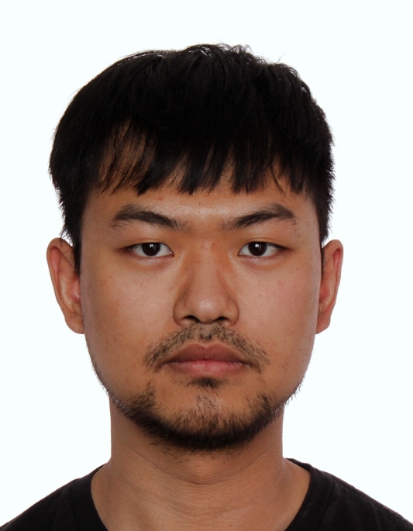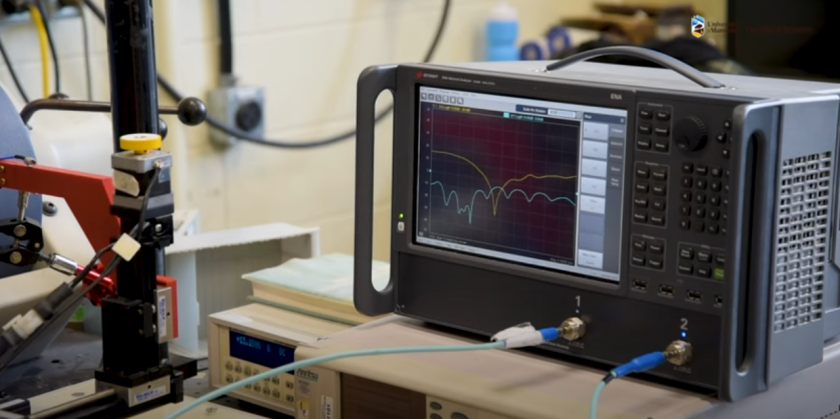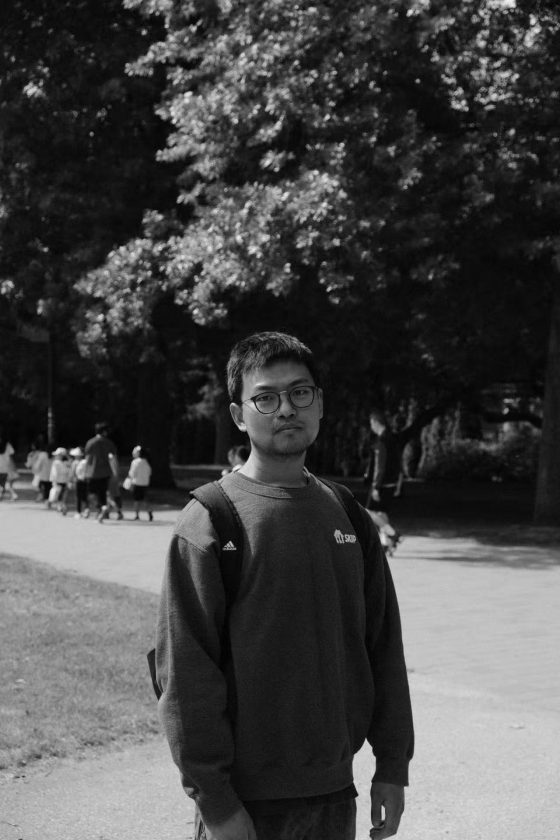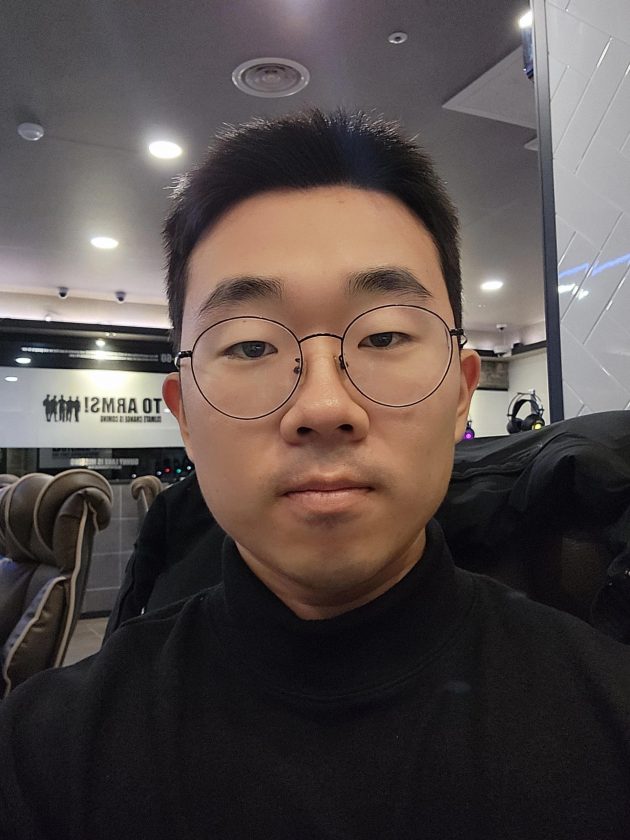
What if you could send a pulse of light into a device, and have it appeared ‘faster’ or ‘slower’ depending
on which direction it came from?
That’s exactly the effect demonstrated in a recent experiment on cavity magnonics polariton platform. By
exploiting the interaction between microwave (photons) and spin waves (magnons), the team
demonstrated that the peak of a light pulse can be shifted forward or backward in time, depending on its propagation direction, without significantly sacrificing transmission efficiency.
This research was conducted by the Spintronics Group at the Department of Physics & Astronomy, University of Manitoba, Canada, led by Dr. Can-Ming Hu (FAPS, Distinguished Professor, Habil.). The group investigates the interplay between magnons and photons in hybrid systems, aiming to deepen our
understanding of solid-state physics and to explore new application possibilities in microwave
technology.
In this interview, Jerry Lu, a PhD student in the group, walks us through the technical finesse behind the
experiment, addresses common misconceptions, and shares his thoughts on how this work could find
applications in the future. Scroll down for the full conversation:

Jerry, could you please break down what “nonreciprocal phase control” means in layperson’s terms? For those of us who aren’t physicists, what exactly are you making light do, and why is that a big deal?
Although we did not explicitly use the term “nonreciprocal phase control,” nevertheless, this work shows that our device can nonreciprocally manipulate the phases of spectral components in a pulse, while keeping the comparable transmission amplitude in both directions. When the pulse travels from one side, its peak shifts forward—effectively an “advance” of the wave packet—whereas the same pulse coming from the opposite direction experiences a backward shift, resulting in a “delay” of the peak. In typical electromagnetically induced transparency (EIT) systems, the response is mostly reciprocal. What we demonstrate here is different: a nonreciprocity in positive and negative group delay, therefore nonreciprocal “fast” and “slow” light—something that hasn’t been demonstrated before.
Your work opens up possibilities for signal routing that’s direction-dependent. Could this lead to future communication systems where data streams move like express trains, faster in one direction than the other?
Yes, the underlying principle demonstrated in this work could potentially be applied in future communication systems—for example, in controlling the timing of pulse signals depending on their direction, which might be useful for certain routing or synchronization tasks. That said, our current device is still a proof of concept, and translating this effect into practical technology will require significant further development. It’s not something ready for immediate application, but we hope it opens up a new direction for research that others, especially engineers, can build upon in the future.
Traditional electromagnetically induced transparency (EIT) methods have limitations because they’re reciprocal. How does your magnonics-based system overcome this, and what kinds of
devices could benefit most?
In our system, we use a magnon—the quanta of collective spin precession in a magnetized material—as the key physical ingredient. Here, “precession” can be understood as the tiny magnetic moments inside the material trace out a circular motion—like a spinning top wobbling around its axis. This precessional motion is set by an external magnetic field, and crucially, it has a fixed sense of rotation—a handedness. Because of this built-in directionality, a microwave pulse traveling through the material sees a different effective response depending on which way it’s moving. From one side, the pulse experiences a dispersion that shifts its peak forward—producing a “fast light” effect. From the other side, the dispersion shifts the peak backward—causing “slow light.” So unlike conventional EIT, which is reciprocal and treats both directions symmetrically, our system introduces a direction-dependent timing shift rooted in the underlying spin precession. This kind of directional control over pulse timing could benefit future microwave components—direction dependent delay lines, or signal routers—where timing asymmetry is important.
This research feels like it’s at the boundary between classical and quantum technologies. Do you see your system being used one day in quantum information networks?
Cavity magnonics is relevant in both classical and quantum physics. However, our current work remains firmly in the classical regime—we’re demonstrating nonreciprocal behavior in a classical cavity magnon-polariton system, but we’re not yet working with quantum states. That being said, magnons have already been shown to interact with superconducting qubits and single photons, so the idea of incorporating this principle into quantum information networks is certainly not impossible. However, achieving that would require several demanding conditions—for example, generating and controlling individual magnons, minimizing system losses, and operating at cryogenic temperatures. These are technically challenging goals, but they represent an exciting direction for future exploration base on this working principle. So while we see this work as helping to lay the groundwork, it’s just one step. There’s still a long way to go before systems like this could reliably operate in a true quantum network.
What’s the biggest technical challenge you faced while building and testing this cavity magnonics system? Was there a moment where the experiment almost didn’t work?
I think people often expect science to have dramatic moments—like in a novel or movie—where there’s a sudden breakthrough or a near-disaster. But in reality, especially for experiments like this, it’s much more about careful planning and rigorous preparation. Before we even started taking data, we spent a lot of time on calibration and making sure every parameter—from resonator frequencies to pulse shapes—were well understood. So no, we didn’t really face a single “it almost failed” moment. Instead, the challenge was spread across many small, deliberate steps: measuring the exact properties of each component, tuning the coupling just right, and choosing the wave packet that would best highlight the nonreciprocal effect. Each step might seem minor, but together they were crucial for getting reliable, reproducible results. That’s what made the experiment work—not luck or drama, but attention to detail.
How do you explain this research to friends or family who aren’t scientists? Do you have a go-to metaphor or analogy that helps make it click for them?
I usually describe it like this: imagine a sealed box made of a special artificial material—you can’t see inside, and you don’t know exactly what’s going on in there. But this material has a strange property: it reacts differently depending on which direction a signal enters. If you send a wave packet in from the left, the internal structure shifts the peak forward—like “fast light.” If you send the same wave in from the right, the material pulls the peak backward—like “slow light.” It’s as if the box is either pushing or pulling on the signal depending on which side you use. You don’t need to know the details inside to see the effect—it’s all about the timing difference at the output.

Quick bits:
Describe your research in one word.
Solid
What’s the most common misunderstanding people have about slowing light?
Actually, the most common misunderstanding isn’t about “slow light” but about “fast light.” People often think that if a pulse comes out earlier than expected, it must have traveled faster than the speed of light—which would violate relativity. But that’s not what’s really happening. In these cases, the pulse’s peak appears to shift forward due to reshaping—it’s not that any part of the signal is traveling faster than light, but rather that the shape of the pulse changes as it moves through the system. The key point is that the pulse is already present inside the medium, so no new information is being sent faster than light. As a result, there’s no conflict with relativity.
If light were a traveler, what kind of transportation would your system turn it into?
That’s a fun question—but in our case, it’s a bit misleading to think of light as a traveler moving from point A to point B. A pulse is made up of many frequency components, and those components are already present throughout the entire path. What our device does is modify these spectral components in a direction-dependent way—specifically by manipulating their phases. This phase control changes how the different frequency components interfere with each other. As a result, when the pulse recombines at the output, its peak appears at a different time, depending on the direction it came from.
If you could ask Einstein one question about your work, what would it be?
I think I’d ask him how he would approach this topic—how he’d think about nonreciprocal wave phenomena from the beginning. What assumptions would he question, what symmetries would he look for, and how would he frame the problem before diving into the math or experiments? To me, the most fascinating part of Einstein’s legacy isn’t just the answers he gave, but the way he asked questions and the logical chain he constructs. I’d love to know how he would build the theoretical foundation for something like this from the ground up, and learn from it.
Wow! Thank you, Jerry Lu, for sharing such a clear and insightful perspective on your work. Your ability to explain complex concepts with precision, and just the right dose of metaphor, made this a truly engaging conversation. We’re excited to see how your research continues to shape the path for nonreciprocal signal control and beyond. Best wishes for your ongoing journey in science and discovery!



